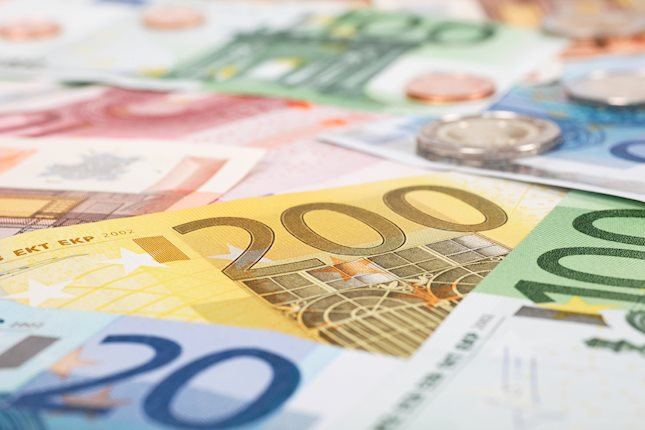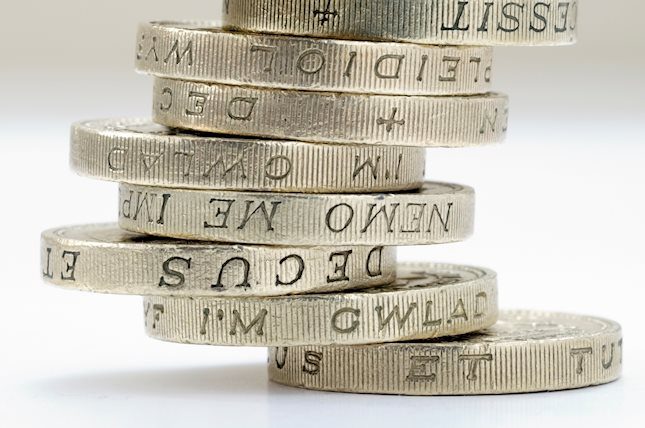- The Japanese Yen draws support from fears about a possible government intervention.
- The BoJ rate-hike uncertainty and the risk-on environment should cap the safe-haven JPY.
- Elevated US bond yields could act as a tailwind for USD/JPY ahead of the Fed decision.
The Japanese Yen (JPY) remains on the front foot against its American counterpart heading into the European session on Thursday amid speculations that Japanese authorities will intervene to prop up the domestic currency. This, along with a modest US Dollar (USD) downtick, turn out to be key factors exerting some pressure on the USD/JPY pair. That said, any meaningful JPY recovery from its lowest level since July 30 touched on Wednesday seems elusive in the wake of the uncertainty about the Bank of Japan's (BoJ) rate hike plans.
Furthermore, the underlying bullish tone across the global equity markets should continue to cap the upside for the safe-haven JPY. Meanwhile, hopes of higher growth and inflation under Trump's presidency support prospects for slower rate cuts by the Federal Reserve (Fed). This keeps the US Treasury bond yields, which should continue to offer support to the USD and contribute to keeping a lid on the lower-yielding JPY. Traders might also prefer to wait for the outcome of the Federal Open Market Committee (FOMC) meeting later today.
Daily Digest Market Movers: Japanese Yen lacks bullish conviction amid BoJ rate-hike uncertainty, positive risk tone
- Japan's Chief Cabinet Secretary, Yoshimasa Hayashi, reiterated on Wednesday that the government intended to closely watch moves in the FX market, including speculative moves, with a higher sense of urgency.
- Adding to this, Atsushi Mimura, Japan’s Vice Finance Minister for International Affairs and top foreign exchange official, said on Thursday that the government is ready to take appropriate actions against excess FX moves if necessary.
- Japan’s Finance Minister Katsunobu Kato said on Thursday that it is important to achieve fiscal health while we strongly push for economic recovery and that we must take this chance to achieve an escape from deflation.
- The minutes of the September Bank of Japan meeting showed that the central bank plans gradual policy rate increases, though it remains cautious about overseas economic uncertainties, especially from the US.
- Investors, however, seem convinced that the political uncertainty in Japan could make it difficult for the BoJ to tighten monetary policy further, which, along with the risk-on mood, undermines the Japanese Yen.
- The US Dollar recorded its biggest one-day gain since September 2022, touching the highest level since July amid hopes that Donald Trump's policies would push up inflation and reduce the pace of interest rate cuts.
- Furthermore, the return of the so-called Trump trade triggered a sell-off in the US fixed-income market, pushing the yield on the benchmark 10-year US government bond to 4.45%, or its highest level since July.
- This resulted in the further widening of the US-Japan rate differential, which might continue to weigh on the lower-yielding JPY and suggests that the path of least resistance for the USD/JPY pair is to the upside.
Technical Outlook: USD/JPY corrective slide might still be seen as a buying opportunity
From a technical perspective, the overnight breakout above the 153.80-153.85 supply zone and a subsequent strength beyond the 154.00 mark was seen as a fresh trigger for bullish traders. Moreover, oscillators on the daily chart are holding in positive territory and are still away from being in the overbought zone. This further validates the near-term positive outlook for the USD/JPY pair and supports prospects for a move towards reclaiming the 155.00 psychological mark. The momentum could extend further towards the next relevant hurdle near the 155.45-155.50 region.
On the flip side, the 154.00 round figure might now offer immediate support to the USD/JPY pair. Some follow-through selling below the 153.85-153.80 resistance-turned-support could drag spot prices to the 153.25 region en route to the 153.00 mark, which is closely followed by the 152.75 support. Any further corrective decline might still be seen as a buying opportunity and is more likely to remain limited near the 152.00 round-figure mark.
Economic Indicator
Fed Interest Rate Decision
The Federal Reserve (Fed) deliberates on monetary policy and makes a decision on interest rates at eight pre-scheduled meetings per year. It has two mandates: to keep inflation at 2%, and to maintain full employment. Its main tool for achieving this is by setting interest rates – both at which it lends to banks and banks lend to each other. If it decides to hike rates, the US Dollar (USD) tends to strengthen as it attracts more foreign capital inflows. If it cuts rates, it tends to weaken the USD as capital drains out to countries offering higher returns. If rates are left unchanged, attention turns to the tone of the Federal Open Market Committee (FOMC) statement, and whether it is hawkish (expectant of higher future interest rates), or dovish (expectant of lower future rates).
Read more.Next release: Thu Nov 07, 2024 19:00
Frequency: Irregular
Consensus: 4.75%
Previous: 5%
Source: Federal Reserve
Information on these pages contains forward-looking statements that involve risks and uncertainties. Markets and instruments profiled on this page are for informational purposes only and should not in any way come across as a recommendation to buy or sell in these assets. You should do your own thorough research before making any investment decisions. FXStreet does not in any way guarantee that this information is free from mistakes, errors, or material misstatements. It also does not guarantee that this information is of a timely nature. Investing in Open Markets involves a great deal of risk, including the loss of all or a portion of your investment, as well as emotional distress. All risks, losses and costs associated with investing, including total loss of principal, are your responsibility. The views and opinions expressed in this article are those of the authors and do not necessarily reflect the official policy or position of FXStreet nor its advertisers. The author will not be held responsible for information that is found at the end of links posted on this page.
If not otherwise explicitly mentioned in the body of the article, at the time of writing, the author has no position in any stock mentioned in this article and no business relationship with any company mentioned. The author has not received compensation for writing this article, other than from FXStreet.
FXStreet and the author do not provide personalized recommendations. The author makes no representations as to the accuracy, completeness, or suitability of this information. FXStreet and the author will not be liable for any errors, omissions or any losses, injuries or damages arising from this information and its display or use. Errors and omissions excepted.
The author and FXStreet are not registered investment advisors and nothing in this article is intended to be investment advice.
Recommended content
Editors’ Picks

EUR/USD stays bid above 1.0550 ahead of Eurozone inflation data
EUR/USD is holding gains above 1.0550 in the European trading hours on Friday. The pair derives strength from the peristent US Dollar weakness, further fuelled by the USD/JPY sell-off. Buyers, however, remain cautious ahead of the Eurozone preliminary inflation data.

GBP/USD regains 1.2700 on weaker US Dollar
GBP/USD retains some follow-through positive traction above 1.2700 in European trading on Friday, sitting close to a two-week top. Broad-based US Dollar weakness, improving risk appetite and thin market condtions continue to aid the pair's recovery.

Gold price eases off weekly highs, remains above $2,650
Gold price has eased from the weely highs but holds moderate gains above $2,650 in the European session on Friday. Gold price builds on this week's goodish rebound from the $2,600 neighborhood. US President-elect Trump's tariff plans, Russia-Ukraine geopolitical risks and dovish Fed bets power the bright metal.

Bitcoin attempts for the $100K mark
Bitcoin (BTC) price extends its recovery and nears the $100K mark on Friday after facing a healthy correction this week. Ethereum (ETH) and Ripple (XRP) closed above their key resistance levels, indicating a rally in the upcoming days.

Eurozone PMI sounds the alarm about growth once more
The composite PMI dropped from 50 to 48.1, once more stressing growth concerns for the eurozone. Hard data has actually come in better than expected recently – so ahead of the December meeting, the ECB has to figure out whether this is the PMI crying wolf or whether it should take this signal seriously. We think it’s the latter.

Best Forex Brokers with Low Spreads
VERIFIED Low spreads are crucial for reducing trading costs. Explore top Forex brokers offering competitive spreads and high leverage. Compare options for EUR/USD, GBP/USD, USD/JPY, and Gold.